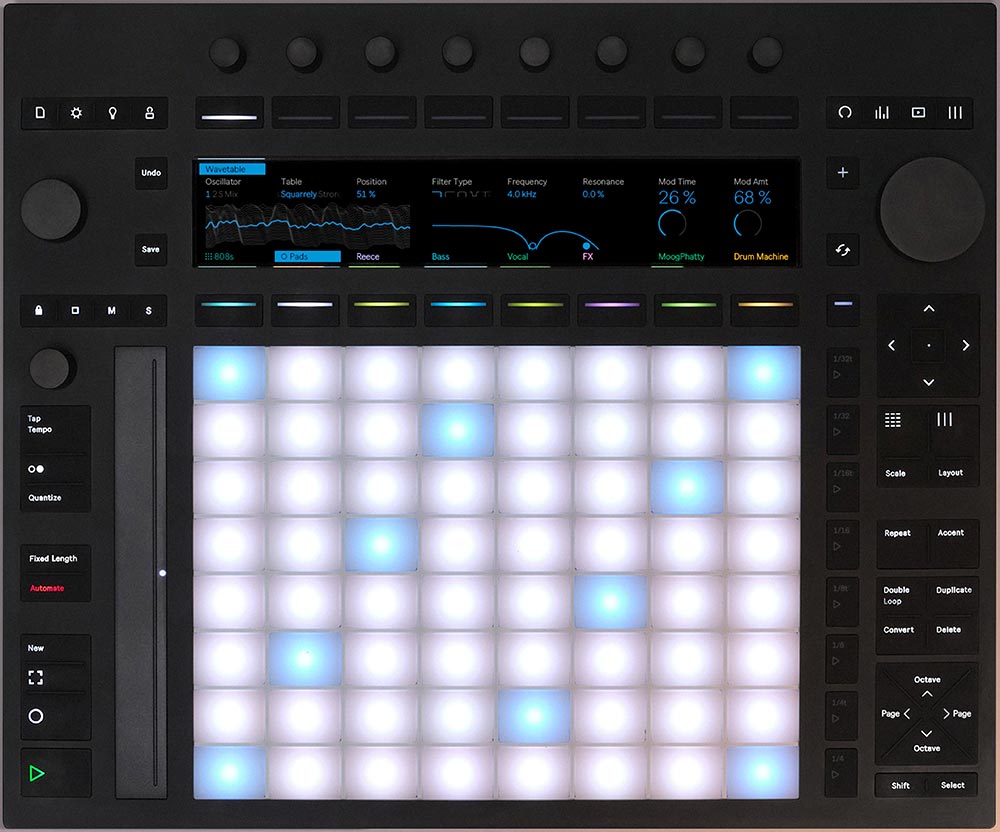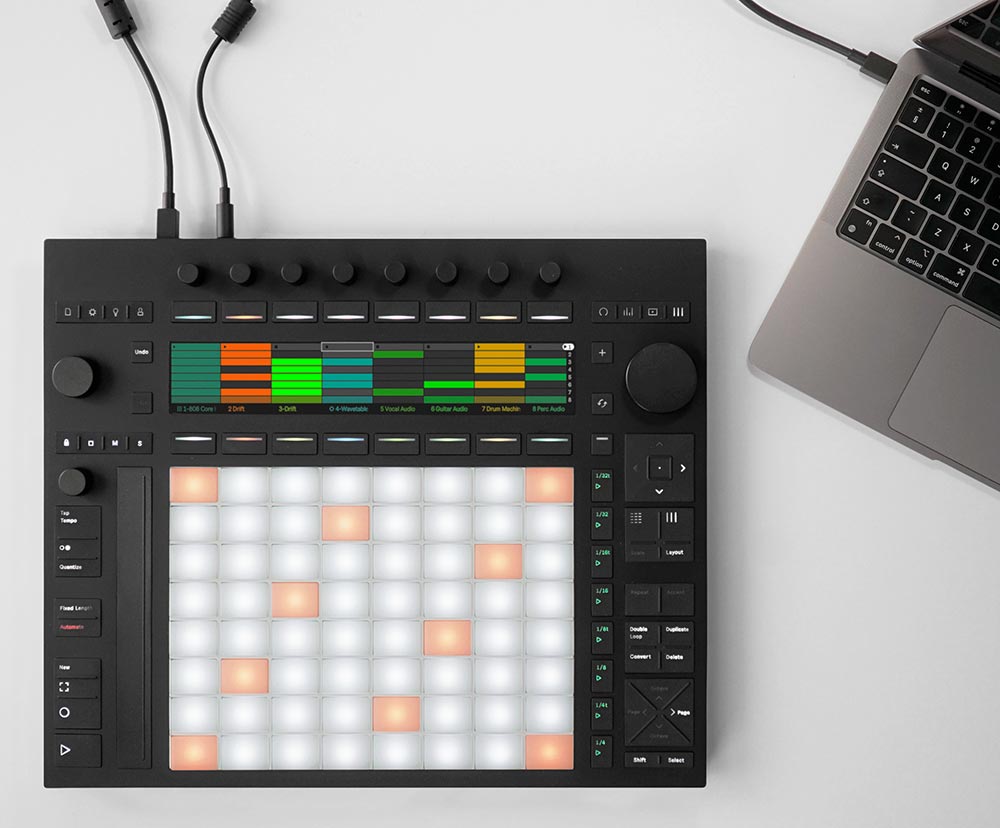Ableton has released the Push 3 controller. Push 3 comes in two flavors, Standalone and Regular. The Regular Push model is similar to Push 2 in that its just a controller. The Standalone model contains an integrated computer, hard drive and battery, so you can work on your tracks without being tethered to a computer, similar to Native Instruments Maschine+.
The regular Push 3 can be upgraded in the future to full standalone specs with an optional upgrade kit. Ableton asserts that the Push 3 is future proof in that the processor, hard drive and battery can be upgraded as new technology emerges, but in the decades that we’ve been reporting on music technology, we’ve never seen this claim to actually become reality.
Ableton Push 3


The easiest way for electronic musicians to get their music onto Spotify, Apple Music, iTunes, Amazon Music, Tidal, Instagram, Facebook, TikTok, Pandora, Twitch & much more! Click the banner above or the Go Button to save 7% off of your signup! GO!

Are MPE-Enabled Pads & A Built-In Sound Card Worth A $999 Upgrade?
Push 3 features 64 expressive MPE pads, a built-in audio interface and an Intel 11th Gen Core i3-1115G4 processor with 8GB of RAM. For the extra grand that Push 3 costs, an i3 processor is nothing to get jazzed about from the specs, but we’ll have to see how powerful this chip is in real-world use. The built-in lithium battery only provides “up to 2.5 hours play time,” which is also nothing to get excited about and is a surprisingly low spec considering how musicians will utilize Push 3 on the go. Rounding out Push 3’s specs is a built-in 256GB SSD hard drive. Not bad, but again, for the extra 1000 beans, you’d expect more.
As mentioned above, the Push 3 provides the ability for the processor, battery and hard drive to be replaced by the user as technology improves. Time will tell.
One of the more exciting features of Push 3 is the MPE integration with the pads. Push 3’s 64 MPE-capable pads detect finger pressure and placement across X and Y axes for per-note control. Users can play bends and slides, filter or affect some notes within a chord, or play multiple articulations within one pad. It will be interesting to see how this plays out with connecting to a MPE-enabled synth and the extent of detail you can achieve with expression.

Push 3 has the ability to plug external instruments, synths and effects straight into the built-in audio interface to record directly into Push Standalone or into Ableton Live. Plus, send gate and CV signals to your modular gear for a combined Eurorack/Push setup, or use your Push with class-compliant MIDI gear.
Unfortunately the pad size hasn’t increased for finger drumming, but Ableton claims the new pad design does provide timbral variation akin to a natural drum head. Furthermore, the MPE-control may add features that Push 3 percussionists can employ for new rhythmic variations and techniques.
Ableton didn’t mention anything about improved workflow or usability. Push 1 and 2 both have a significant learning curve, which was daunting to even the biggest fans of Ableton Live. However, there are plenty of tutorials available, and even Ableton produces video instruction.
Both Push 3 models feature two balanced inputs and two balanced outputs, plus a headphone out for main or cue output. With an ADAT extender, you can add an additional 8 inputs or outputs, expanding your setup to include mic preamps, additional instruments and effects, and multiple connections to modular gear. The ADAT interface is a curious decision and we’ll have to see exactly how to utilize this when we review the Push 3.
Class-compliant USB MIDI interfaces are supported. Connect a standard MIDI keyboard or other controller to Push 3 for more ways to play its internal instruments, and send MIDI to your hardware for an expanded, laptop-free workstation. Anything you make using Push in Standalone Mode can be transferred to your computer over WiFi, and opened in Live. When working with Live’s native devices, you’ll be able to transfer your project back to Push to keep creating or perform in Standalone Mode.
Push 3 Standalone Features:
- 64 MPE-enabled pads, each featuring an XY sensor that detects your finger’s movement across the surface of the pad. RGB backlighting.
- Built-in Intel 11th Gen Core i3-1115G4 processor with 8GB of RAM
- 2 hours of play time with built-in lithium iron phosphate battery
- 256GB built-in SSD hard drive
- Supports WiFi connection for cable-free Live set transfer, Pack downloads and firmware updates, plus hardware syncing via Ableton Link
- Control and sequence your modular setup and other external synths by sending CV and gate signals from Push’s footswitch jacks.
- 3 Year Warranty
- Works with any edition of Live 11.3.2 or later
- Weight: 3.95 kg / 8.7lbs
- Push 3 Upgrade Kit available for $1079
- Live Set Transfer
- USB A and C connectivity








